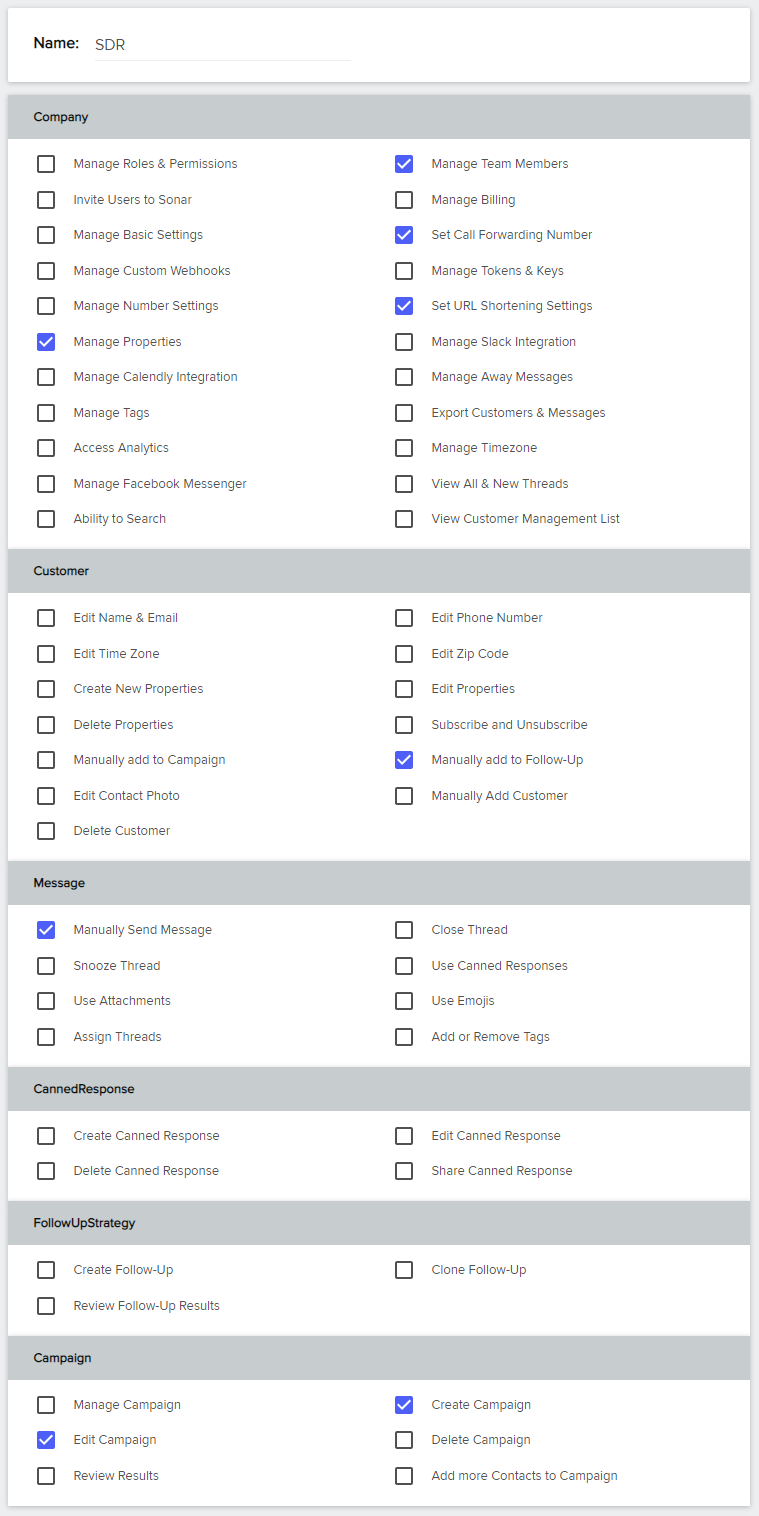Organizing your team members’ permissions in Sonar according to their specific roles has been proven to help drive revenue and growth. Using Custom Roles and Permissions enables each team member to focus on tasks that only pertain to their job description. In this 4-part series, we will go over common team roles and what their role-based access controls (RBACs) should look like in Sonar.
For example, an SDR is able to support a sales rep with lead qualification, nurturing, and movement through the funnel. This enables the sales rep to focus solely on setting meetings, performing demos, and closing deals.
SDRs
Sales Development Reps (SDRs) don’t focus on closing deals. Rather, they focus on lead generation and are typically measured by how effectively they move leads through the sales pipeline. They live in a company’s CRM and are the key proponents utilizing sales enablement software technology. Some of their primary responsibilities include building demand generation lists, qualifying prospects, facilitating sales operations, and performing outbound prospecting/communication.
In Sonar
Within Sonar, a typical SDR will have very limited access. The only customer-facing access they should have is sending a text message and manually adding customers to a follow-up campaign. They may also create and edit a campaign, but will not be able to manage it. This is essentially supporting the sales rep by performing some of the “dirty work”. In addition, they can access and control basic customer properties and set the URL shortening setting for campaigns. SDRs perform prospecting for the sales rep, so having access to call forwarding settings is recommended. In cases where a prospect calls the SDR’s Sonar number, it will forward the call over to the sales rep.
Below is what a typical SDR should have access to in Sonar:

